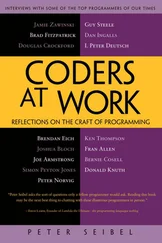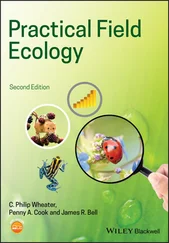Peter Siebel - Practical Common Lisp
Здесь есть возможность читать онлайн «Peter Siebel - Practical Common Lisp» весь текст электронной книги совершенно бесплатно (целиком полную версию без сокращений). В некоторых случаях можно слушать аудио, скачать через торрент в формате fb2 и присутствует краткое содержание. Год выпуска: 2005, ISBN: 2005, Издательство: Apress, Жанр: Программирование, на английском языке. Описание произведения, (предисловие) а так же отзывы посетителей доступны на портале библиотеки ЛибКат.
- Название:Practical Common Lisp
- Автор:
- Издательство:Apress
- Жанр:
- Год:2005
- ISBN:1-59059-239-5
- Рейтинг книги:4 / 5. Голосов: 1
-
Избранное:Добавить в избранное
- Отзывы:
-
Ваша оценка:
- 80
- 1
- 2
- 3
- 4
- 5
Practical Common Lisp: краткое содержание, описание и аннотация
Предлагаем к чтению аннотацию, описание, краткое содержание или предисловие (зависит от того, что написал сам автор книги «Practical Common Lisp»). Если вы не нашли необходимую информацию о книге — напишите в комментариях, мы постараемся отыскать её.
Practical Common Lisp — читать онлайн бесплатно полную книгу (весь текст) целиком
Ниже представлен текст книги, разбитый по страницам. Система сохранения места последней прочитанной страницы, позволяет с удобством читать онлайн бесплатно книгу «Practical Common Lisp», без необходимости каждый раз заново искать на чём Вы остановились. Поставьте закладку, и сможете в любой момент перейти на страницу, на которой закончили чтение.
Интервал:
Закладка:
(if test-form then-form [ else-form ])
The test-form will always be evaluated and then one or the other of the then-form or else-form .
An even simpler special operator is QUOTE , which takes a single expression as its "argument" and simply returns it, unevaluated. For instance, the following evaluates to the list (+ 1 2), not the value 3:
(quote (+ 1 2))
There's nothing special about this list; you can manipulate it just like any list you could create with the LIST function. [49] Well, one difference exists—literal objects such as quoted lists, but also including double-quoted strings, literal arrays, and vectors (whose syntax you'll see later), must not be modified. Consequently, any lists you plan to manipulate you should create with LIST .
QUOTE is used commonly enough that a special syntax for it is built into the reader. Instead of writing the following:
(quote (+ 1 2))
you can write this:
'(+ 1 2)
This syntax is a small extension of the s-expression syntax understood by the reader. From the point of view of the evaluator, both those expressions will look the same: a list whose first element is the symbol QUOTE and whose second element is the list (+ 1 2). [50] This syntax is an example of a reader macro . Reader macros modify the syntax the reader uses to translate text into Lisp objects. It is, in fact, possible to define your own reader macros, but that's a rarely used facility of the language. When most Lispers talk about "extending the syntax" of the language, they're talking about regular macros, as I'll discuss in a moment.
In general, the special operators implement features of the language that require some special processing by the evaluator. For instance, several special operators manipulate the environment in which other forms will be evaluated. One of these, which I'll discuss in detail in Chapter 6, is LET , which is used to create new variable bindings. The following form evaluates to 10 because the second xis evaluated in an environment where it's the name of a variable established by the LET with the value 10:
(let ((x 10)) x)
Macros
While special operators extend the syntax of Common Lisp beyond what can be expressed with just function calls, the set of special operators is fixed by the language standard. Macros, on the other hand, give users of the language a way to extend its syntax. As you saw in Chapter 3, a macro is a function that takes s-expressions as arguments and returns a Lisp form that's then evaluated in place of the macro form. The evaluation of a macro form proceeds in two phases: First, the elements of the macro form are passed, unevaluated, to the macro function. Second, the form returned by the macro function—called its expansion— is evaluated according to the normal evaluation rules.
It's important to keep the two phases of evaluating a macro form clear in your mind. It's easy to lose track when you're typing expressions at the REPL because the two phases happen one after another and the value of the second phase is immediately returned. But when Lisp code is compiled, the two phases happen at completely different times, so it's important to keep clear what's happening when. For instance, when you compile a whole file of source code with the function COMPILE-FILE , all the macro forms in the file are recursively expanded until the code consists of nothing but function call forms and special forms. This macroless code is then compiled into a FASL file that the LOAD function knows how to load. The compiled code, however, isn't executed until the file is loaded. Because macros generate their expansion at compile time, they can do relatively large amounts of work generating their expansion without having to pay for it when the file is loaded or the functions defined in the file are called.
Since the evaluator doesn't evaluate the elements of the macro form before passing them to the macro function, they don't need to be well-formed Lisp forms. Each macro assigns a meaning to the s-expressions in the macro form by virtue of how it uses them to generate its expansion. In other words, each macro defines its own local syntax. For instance, the backwardsmacro from Chapter 3 defines a syntax in which an expression is a legal backwardsform if it's a list that's the reverse of a legal Lisp form.
I'll talk quite a bit more about macros throughout this book. For now the important thing for you to realize is that macros—while syntactically similar to function calls—serve quite a different purpose, providing a hook into the compiler. [51] People without experience using Lisp's macros or, worse yet, bearing the scars of C preprocessor-inflicted wounds, tend to get nervous when they realize that macro calls look like regular function calls. This turns out not to be a problem in practice for several reasons. One is that macro forms are usually formatted differently than function calls. For instance, you write the following: (dolist (x foo) (print x)) rather than this: (dolist (x foo) (print x)) or (dolist (x foo) (print x)) the way you would if DOLIST was a function. A good Lisp environment will automatically format macro calls correctly, even for user-defined macros. And even if a DOLIST form was written on a single line, there are several clues that it's a macro: For one, the expression (x foo) is meaningful by itself only if x is the name of a function or macro. Combine that with the later occurrence of x as a variable, and it's pretty suggestive that DOLIST is a macro that's creating a binding for a variable named x . Naming conventions also help—looping constructs, which are invariably macros—are frequently given names starting with do .
Truth, Falsehood, and Equality
Two last bits of basic knowledge you need to get under your belt are Common Lisp's notion of truth and falsehood and what it means for two Lisp objects to be "equal." Truth and falsehood are—in this realm—straightforward: the symbol NIL is the only false value, and everything else is true. The symbol T is the canonical true value and can be used when you need to return a non- NIL value and don't have anything else handy. The only tricky thing about NIL is that it's the only object that's both an atom and a list: in addition to falsehood, it's also used to represent the empty list. [52] Using the empty list as false is a reflection of Lisp's heritage as a list-processing language much as the use of the integer 0 as false in C is a reflection of its heritage as a bit-twiddling language. Not all Lisps handle boolean values the same way. Another of the many subtle differences upon which a good Common Lisp vs. Scheme flame war can rage for days is Scheme's use of a distinct false value #f , which isn't the same value as either the symbol nil or the empty list, which are also distinct from each other.
This equivalence between NIL and the empty list is built into the reader: if the reader sees (), it reads it as the symbol NIL . They're completely interchangeable. And because NIL , as I mentioned previously, is the name of a constant variable with the symbol NIL as its value, the expressions nil, (), 'nil, and '()all evaluate to the same thing—the unquoted forms are evaluated as a reference to the constant variable whose value is the symbol NIL , but in the quoted forms the QUOTE special operator evaluates to the symbol directly. For the same reason, both tand 'twill evaluate to the same thing: the symbol T .
Интервал:
Закладка:
Похожие книги на «Practical Common Lisp»
Представляем Вашему вниманию похожие книги на «Practical Common Lisp» списком для выбора. Мы отобрали схожую по названию и смыслу литературу в надежде предоставить читателям больше вариантов отыскать новые, интересные, ещё непрочитанные произведения.
Обсуждение, отзывы о книге «Practical Common Lisp» и просто собственные мнения читателей. Оставьте ваши комментарии, напишите, что Вы думаете о произведении, его смысле или главных героях. Укажите что конкретно понравилось, а что нет, и почему Вы так считаете.








